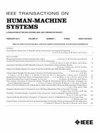基于深度学习的口腔视觉分析,用于口咽拭子机器人采样
IF 3.5
3区 计算机科学
Q2 COMPUTER SCIENCE, ARTIFICIAL INTELLIGENCE
引用次数: 0
摘要
口腔视觉分析在口腔病原体标本采集和口腔疾病诊断中具有重要意义。针对基于深度学习的一般检测器在检测口腔成分方面的性能缺陷,本文提出了一种具有空间特征的实例分割方法——口腔分析网络(MCNet)和口腔数据集(MCData),这是第一个可用的口腔检测和分割数据集。首先,针对缺乏口腔图像数据集的情况,开发了用于口腔关键部位检测和分割的MCData,用于模型训练和测试。其次,基于基于掩模区域的卷积神经网络设计了MCNet。为了提高特征提取的性能,设计了并行多注意模块。此外,针对小尺寸目标检测精度低的问题,设计了多尺度区域建议网络结构。然后,引入口腔空间结构特征,对检测置信度进行细化,提高检测精度;MCNet在MCData上实现了81.5%的检测准确率和78.1%的分割准确率(交集比联合= 0.50:0.95)。与MCData的对比实验表明,所提出的MCNet在口腔实例分割任务上优于目前最先进的方法。此外,MCNet已用于用于COVID-19口咽采样的口咽拭子机器人。本文章由计算机程序翻译,如有差异,请以英文原文为准。
Mouth Cavity Visual Analysis Based on Deep Learning for Oropharyngeal Swab Robot Sampling
The visual analysis of the mouth cavity plays a significant role in the pathogen specimen sampling and disease diagnosis of the mouth cavity. Aiming at performance defects of general detectors based on deep learning in detecting mouth cavity components, this article proposes a mouth cavity analysis network (MCNet), which is an instance segmentation method with spatial features, and a mouth cavity dataset (MCData), which is the first available dataset for mouth cavity detecting and segmentation. First, given the lack of a mouth cavity image dataset, the MCData for detecting and segmenting key parts in the mouth cavity was developed for model training and testing. Second, the MCNet was designed based on the mask region-based convolutional neural network. To improve the performance of feature extraction, a parallel multiattention module was designed. Besides, to solve low detection accuracy of small-sized objects, a multiscale region proposal network structure was designed. Then, the mouth cavity spatial structure features were introduced, and the detection confidence could be refined to increase the detection accuracy. The MCNet achieved 81.5% detection accuracy and 78.1% segmentation accuracy (intersection over union = 0.50:0.95) on the MCData. Comparative experiments with the MCData showed that the proposed MCNet outperformed state-of-the-art approaches with the task of mouth cavity instance segmentation. In addition, the MCNet has been used in an oropharyngeal swab robot for COVID-19 oropharyngeal sampling.
求助全文
通过发布文献求助,成功后即可免费获取论文全文。
去求助
来源期刊

IEEE Transactions on Human-Machine Systems
COMPUTER SCIENCE, ARTIFICIAL INTELLIGENCE-COMPUTER SCIENCE, CYBERNETICS
CiteScore
7.10
自引率
11.10%
发文量
136
期刊介绍:
The scope of the IEEE Transactions on Human-Machine Systems includes the fields of human machine systems. It covers human systems and human organizational interactions including cognitive ergonomics, system test and evaluation, and human information processing concerns in systems and organizations.
 求助内容:
求助内容: 应助结果提醒方式:
应助结果提醒方式:


